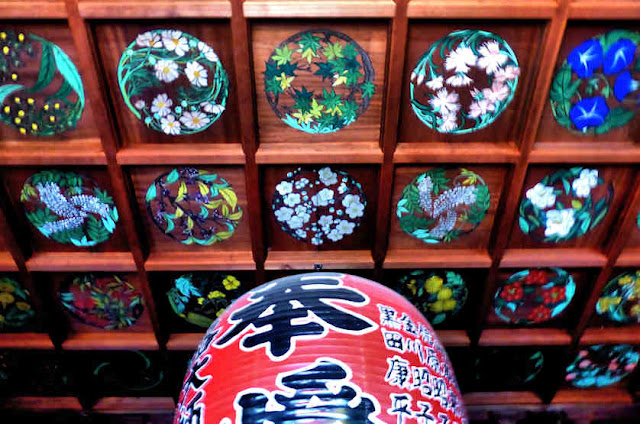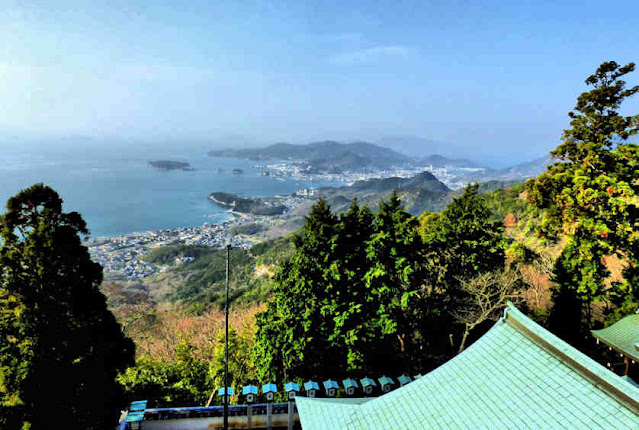Taikodani Inari Shrine is located in the castle town of Tsuwano in the remote mountains of Shimane.
It is generally considered to be one of the top 5 Inari shrines in Japan, though its exact ranking will vary by whichever part of the country you are in.
Across the valley next to National Route 9, the former San-in Do, a huge vermillion torii is visible.
Founded in the late 18th century, the shrine was used exclusively by the domain lord and his samurai as it was within the castle grounds.
It became public in the late 19th century when the castle was decommisioned.
There is now a road that accesses the shrine, but the original entry was via a tunnel of torii that switchbacks up the hillside.
The shrines location on the mountainside offers some panoramic views down on the town and over the surrounding area....
The shrine occupies the kimon position.... NE of the castle and protecting it from the evil influences that come from that direction
The shrine gets a lot of visitors and is the second most popular shrine in all of Shimane, beaten only by Izumo Taisha.
As an Inari Shrine the eshrined kami is officially Uganokitama.....
When the shrine was opened to the public in the late 19th century, a Kumano Gongensha was relocated to within the shrine and renamed Kumano Shrine, enshrining Izanami. Officially it is a co-shrine, and izanami is enshrined within the main honden.
The name Inari at Taikodani is written with a different kanji than most Inari shrines. with a meaning of granting wishes, rather than the more usual meanin connected to rice harvest.
According to the story, a castle official lost an important key and was ordered to commit suicide. Instead he went to the shrine and prayed for seven days and then found the key. The Daimyo is then said to have changed the kanji in response.
On the lower level of the shrine is a purpose-built area for traffic safety ceremonies.
The tunnel of torii that leads up to the main shrine comprises 263 steps....
It is claimed that almost 1,000 torii line the way, but I think that may be an exaggeration.
There is a Treasure hall at the shrine open to the public, but I have never been inside so can't report.
There are some quite impressive, big, old pine trees ....
The current main hall is concrete and was built in 1969.
The earlier main hall, located opposite, is now called Motomiya Shrine and is operated as a branch of the main hall...
Behind it is a Myobu Shrine, enshrining the white fox considered messenger of Inari
The main offering at the shrine is fried tofu which can be purchased at the main shrine shop or at a small shop halfway up the torii tunnel.
If you would like to subscribe by email just leave your email address in the comments below. It will not be published and made public. I post new content almost everyday, and send out an email about twice a month with short descriptions and links to the last ten posts.































































